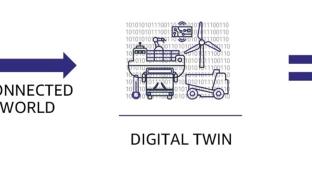Retail Cloud Innovators Series

Five Strategies for Retailers to Improve Sustainability
The focus on sustainability has been gaining momentum for decades, and now it’s reached a fever pitch. As the world stopped and we all shuttered in place to weather a global pandemic, we witnessed drastic changes resulting from a different pace of life. As pollution dissipated, the peaks of the Himalayas became visible for the first time in decades, the water in the canals of Venice cleared, and the world’s wildlife became more vibrant. As the world starts to reopen, these positive environmental changes will fade away as quickly as they materialized. However, we need to remember this important lesson—small actions can result in significant, positive changes.
As consumers become more aware of environmental sustainability, they are increasingly selecting retailers whose sustainability values align with their own. With detailed product and company information readily available, consumers want to know about sustainability practices, and they are gravitating to products and retailers with strong sustainability programs. In a recent study by IBM, 57% of consumers say they are willing to change their purchasing habits to help reduce negative impacts to the environment. And, among those who say sustainability is very important, this jumps to 77%. The IBM study is a significant indicator that customers will reward retailers who follow sustainable practices to produce their products and services.
Although the concept of sustainability may seem daunting, there are things retailers can do to reduce energy consumption, carbon emissions, and waste. Retailers should start simply and begin with the areas that can have the greatest impact to lower costs, increase efficiencies, and improve the customer experience. Here are five actions AWS recommends for improving sustainability.
Action #1: Improve Energy Utilization with Cloud Infrastructure
When you migrate to the cloud, you can reduce costs as well as increase scalability, security, speed, and global reach. Many retailers don’t realize you can also improve sustainability. According to this previously published whitepaper, The Carbon Reduction Opportunity of Moving to AWS by Amazon Sustainability:
“Our results show that AWS’s infrastructure is 3.6 times more energy-efficient than the median of the surveyed US enterprise data centers. More than two-thirds of this advantage is attributable to the combination of a more energy-efficient server population and much higher server utilization. AWS data centers are also more energy-efficient than enterprise sites due to comprehensive efficiency programs that touch every facet of the facility. When we factor in the carbon intensity of consumed electricity and renewable energy purchases, which reduce associated carbon emissions, AWS performs the same task with an 88% lower carbon footprint.”
By implementing a cloud-first strategy, retailers can reduce energy consumption and lower carbon emissions. Of course, these sustainability benefits are in addition to the inherent cloud benefit of lower latency, which allows employees to access real-time data to make better decisions and gives customers a more fluid journey across all digital and physical touchpoints.
Action #2: Reduce Dead Inventory and Waste with AI/ML
In the past, retailers preferred to have too much inventory rather than miss a sale from a stock-out. However, that approach creates “dead inventory.” According to an article in Business of Fashion, US retailers have to deal with approximately $50 billion worth of dead inventory annually. Meanwhile, an article from Bryan Cave Leighton Paisner Law says, “According to the French government, €630 million worth of unsold non-food products are destroyed every year in France, including between 10,000 to 20,000 [tons] of textile products (which is equivalent to the weight of one to two Eiffel Towers).” And what’s more, the destruction of unsold inventory will soon be against the law in France. Instead of producing products that may go to waste, retailers can significantly improve inventory forecasting with AI/ML technologies, like Amazon Forecast. The Indian grocer More uses Amazon Forecast to do exactly that—increasing forecast accuracy from 24% to 70%. In addition, the company reduced waste by 30% and improved gross margins by 25% in their fresh food category. By improving inventory accuracy, retailers can reduce waste and costs, improve margins, and redirect those dollars toward other initiatives.
Action #3: Boost Operational Efficiencies with ML Computer Vision
To help optimize operations in warehouses, the supply chain, and physical stores, retailers should implement computer vision technologies, like AWS Panorama, to identify improvements in energy utilization and output. For example, with ML-based computer visioning, a retailer can monitor customer traffic and reduce lighting at off-peak times. Grocers can use computer vision to view refrigerators and freezers and send alerts when doors are left ajar. Computer vision monitoring in warehouses and across the supply chain can give retailers additional insights to help pinpoint and resolve inefficiencies to optimize throughput and utilization.
Action #4: Decrease Returns with Fine-Tuned Personalization
Yes, online buying is incredibly convenient, but an increase of online sales correlates to an increase in returns. With online return rates ranging from 30% to 56%, retailers can’t ignore the environmental impact of reverse logistics for returns. With solutions like Amazon Personalize, retailers can offer ML-driven product recommendations based on previous purchases, browsing behavior, and other similar information. Zalando, one of Europe’s largest online fashion retailers, uses AWS ML tools to dynamically recommend sizes for every product a customer views based on highly optimized purchase and return data. For example, a customer who usually buys a size 8 dress may see a recommendation to buy a size 6 of a particular dress because other customers returned the item because it was too big. As algorithms improve recommendations, retailers can boost customer confidence before they buy and potentially reduce returns altogether, and—more importantly—delight customers with a perfect fitting item the first time around. With online return deliveries estimated to cost US retailers $550 billion annually, even a small reduction in online returns can save millions of dollars and reduce carbon emissions.
Action #5: Optimize Supply Chain Processes with ML
Many customers aren’t happy with the big, bulky shipping boxes or the inconvenience of recycling the packaging. With those thoughts in mind, Amazon recently embarked on two different ML initiatives with AWS to optimize order packaging. The first initiative, Which Package, improves the package selection for a single order, and the second initiative, What Packaging, ensures that a range of packaging options are in stock at Amazon fulfillment centers to fulfill all sizes and shapes of orders. Both initiatives have already improved order packaging. In fact, Amazon reduced the use of boxes from 69% to 47%, with mailers increasing from 27% to 47%. Since mailers are lighter and smaller, Amazon is shipping more packages per van, and because there is less volume per mailer, they’ve dramatically reduced carbon emissions.
With both initiatives, Amazon has also helped suppliers improve packaging for more sustainable ecommerce deliveries. Most consumer goods are packed so shoppers can see the contents in a retail store. While this packaging makes sense in a retail setting, it often makes the item vulnerable to damage or leakage during shipping for an ecommerce order. To protect the product during shipping, Amazon uses larger packaging and protective plastics that are not recyclable. Amazon worked with Procter & Gamble (P&G) to create eco-friendly packaging for Tide laundry detergent. When you buy Tide on Amazon.com, it now ships in its own container that cleverly transforms into a dispenser. By re-tooling the packaging for ecommerce orders, Amazon and P&G reduced the shipping volume 66% and the amount of air volume by 77%.
As of June 2021, Amazon reduced the weight of outbound packaging by over 36% and eliminated more than one million tons of packaging material—the equivalent of two billion shipping boxes.
As customers shift buying habits toward sustainable retailers, AWS and Amazon are leading the way—in our own operations and by helping other retailers and CPG manufacturers. If you want to implement sustainability strategies, AWS is here to help you. Contact your account team today to get started.






197a.jpg)